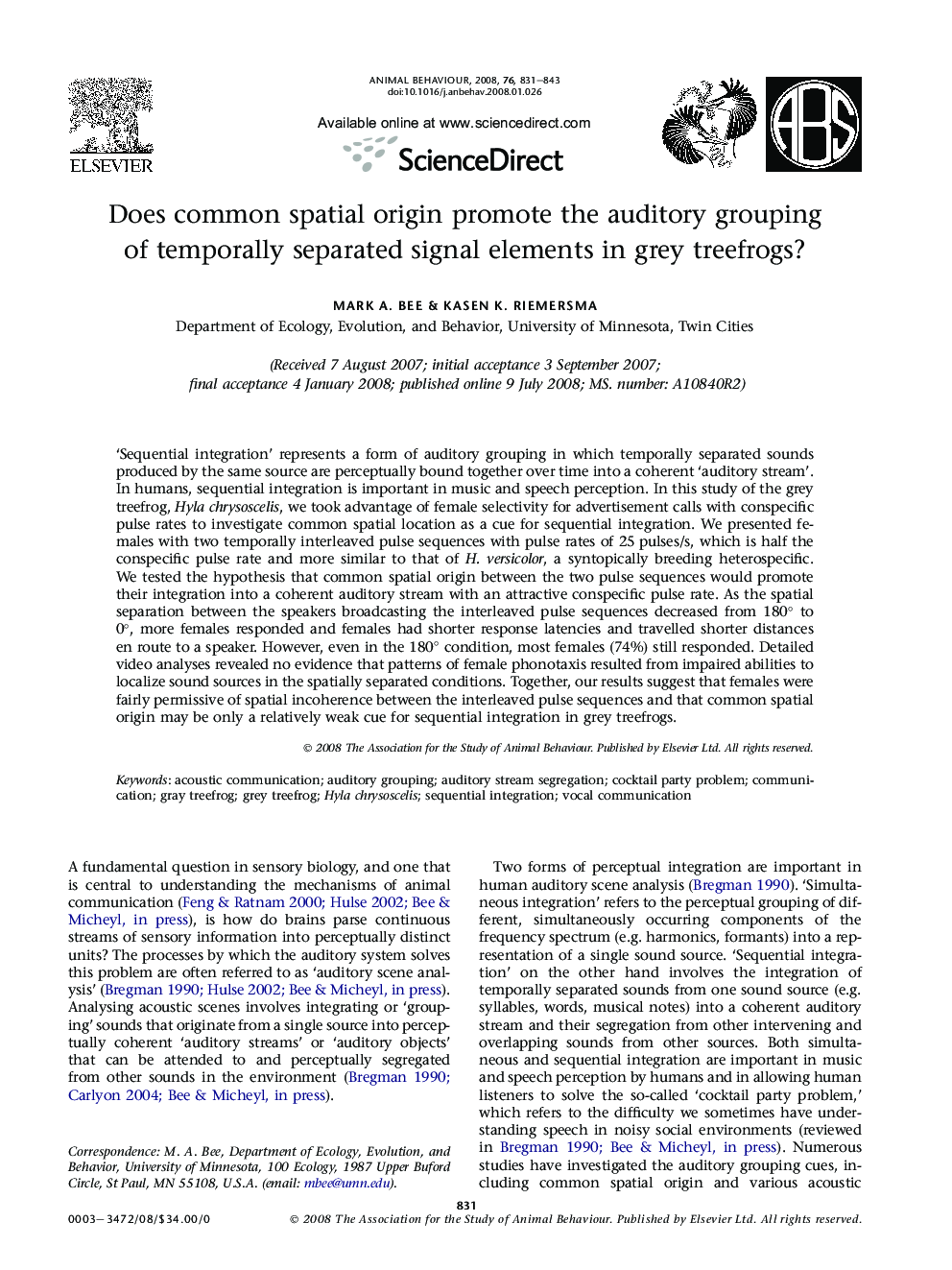| Article ID | Journal | Published Year | Pages | File Type |
|---|---|---|---|---|
| 2418828 | Animal Behaviour | 2008 | 13 Pages |
‘Sequential integration’ represents a form of auditory grouping in which temporally separated sounds produced by the same source are perceptually bound together over time into a coherent ‘auditory stream’. In humans, sequential integration is important in music and speech perception. In this study of the grey treefrog, Hyla chrysoscelis, we took advantage of female selectivity for advertisement calls with conspecific pulse rates to investigate common spatial location as a cue for sequential integration. We presented females with two temporally interleaved pulse sequences with pulse rates of 25 pulses/s, which is half the conspecific pulse rate and more similar to that of H. versicolor, a syntopically breeding heterospecific. We tested the hypothesis that common spatial origin between the two pulse sequences would promote their integration into a coherent auditory stream with an attractive conspecific pulse rate. As the spatial separation between the speakers broadcasting the interleaved pulse sequences decreased from 180° to 0°, more females responded and females had shorter response latencies and travelled shorter distances en route to a speaker. However, even in the 180° condition, most females (74%) still responded. Detailed video analyses revealed no evidence that patterns of female phonotaxis resulted from impaired abilities to localize sound sources in the spatially separated conditions. Together, our results suggest that females were fairly permissive of spatial incoherence between the interleaved pulse sequences and that common spatial origin may be only a relatively weak cue for sequential integration in grey treefrogs.
